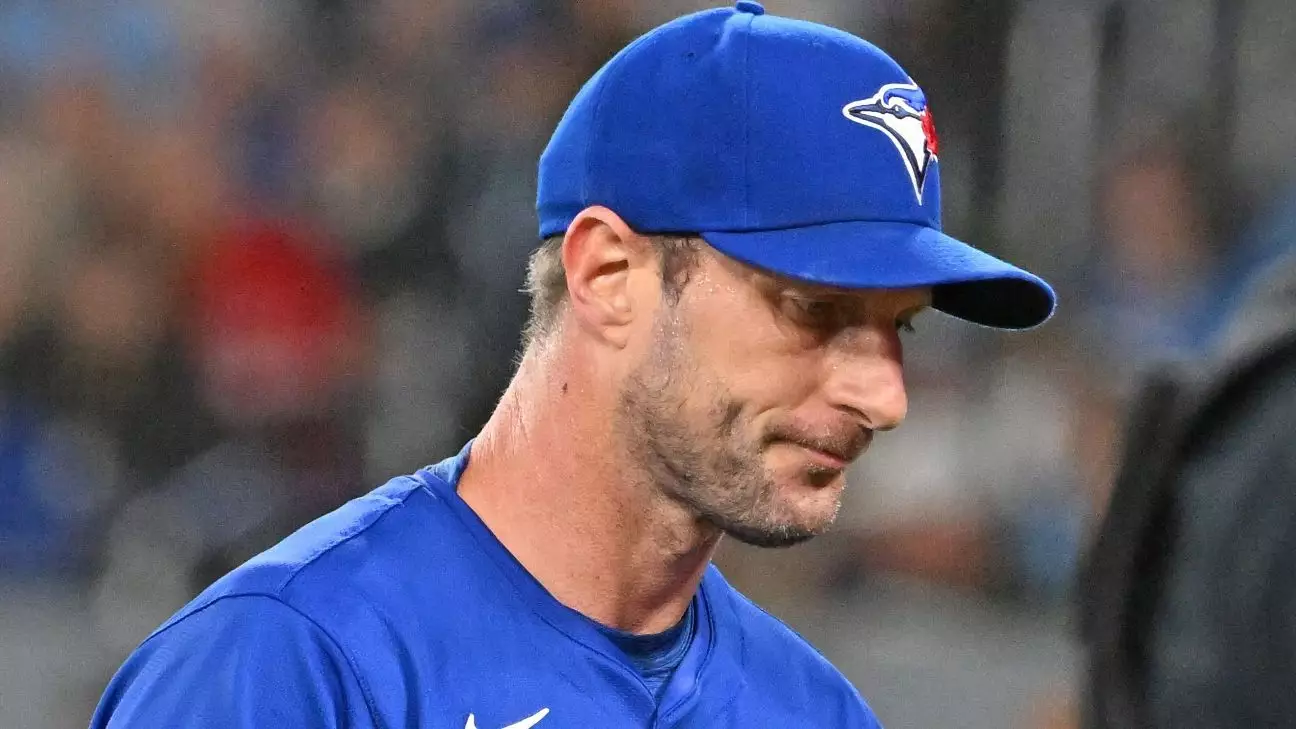Toronto Blue Jays fans are holding their breath as their newly acquired right-hander, Max Scherzer, grapples with persistent soreness in his right thumb. This issue isn’t just a minor irritation; it has led to Scherzer experiencing setbacks that could jeopardize his performance throughout the season. As a veteran pitcher and a three-time Cy Young Award winner, every game is crucial not only for his team but also for his legacy.
Scherzer’s journey took another significant turn as he prepares for a second consultation with a specialist in the United States later this week. This move signifies the seriousness of his condition; it’s not just about pain management but about understanding the underlying issues that have plagued him since March. Manager John Schneider’s comments on Scherzer’s recent attempts to throw the ball during the team’s road trip highlight both the pitcher’s determination and the team’s ongoing concern about his readiness to return.
Setbacks Compound Challenges
Compounding Scherzer’s thumb problems are the lingering effects of a previous lat muscle injury that forced him out during his debut with the Blue Jays on March 29. His candid admission that the thumb issue contributed to that injury should raise alarm bells about both his health and the dynamics of the team’s rotation in the early season. Having been placed on the 15-day injured list for right thumb inflammation less than 48 hours after his first start, it’s clear that Scherzer’s transition to the Blue Jays is fraught with challenges.
The trajectory of his spring training had indicated troubles, with starts being pushed back due to his recurring thumb pain, highlighting that these physical issues are not merely seasonal but systemic and perhaps chronic. Toronto’s management is caught in a precarious position; while they understandably want him to be in the game as soon as possible, they are also faced with the challenge of ensuring that he returns in a condition that will not lead to further injuries.
A Multi-Million Dollar Gamble
The stakes are high for both Scherzer and the Blue Jays, especially considering his substantial one-year, $15.5 million contract signed in February. Expectations are sky-high, given his previous success with the Texas Rangers, where he posted a less-than-stellar record of 2-4 with a 3.95 ERA last season. Those mixed results, coupled with his shutdown due to various injuries—including a significant recovery from lower back surgery—paint a picture of a player whose body is increasingly at odds with the demands of professional baseball.
In this context, Scherzer’s desire to “hammer it out,” as noted by Schneider, reflects both a fierce competitive spirit and a precarious gamble on his physical condition. The pressure on him to perform under these circumstances is immense, especially as the team navigates the tricky waters of managing their pitching lineup without jeopardizing his long-term health.
In a sport where injuries can shift the balance of power, Scherzer’s situation serves as a stark reminder of the physical demands placed on athletes. The questions surrounding his fitness not only impact the Blue Jays’ immediate future but also shine a light on the broader implications of player health management in professional sports. With each passing day, fans and analysts alike are left to wonder just how much longer the Blue Jays can hold their breath while waiting for their ace to heal and dominate once again on the mound.


Leave a Reply